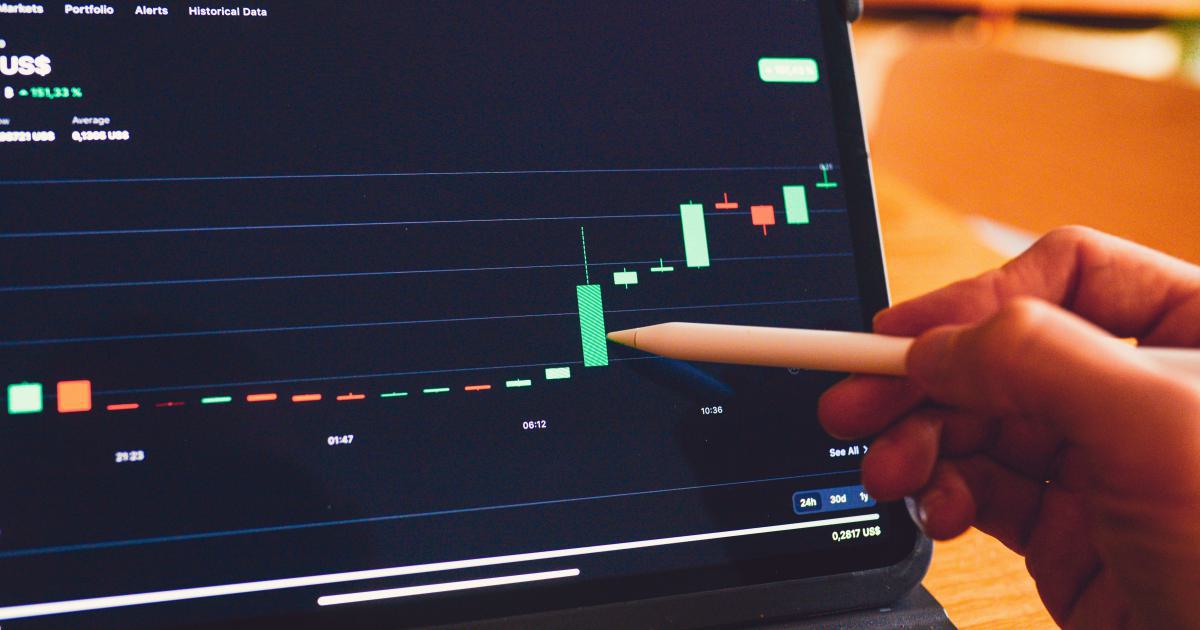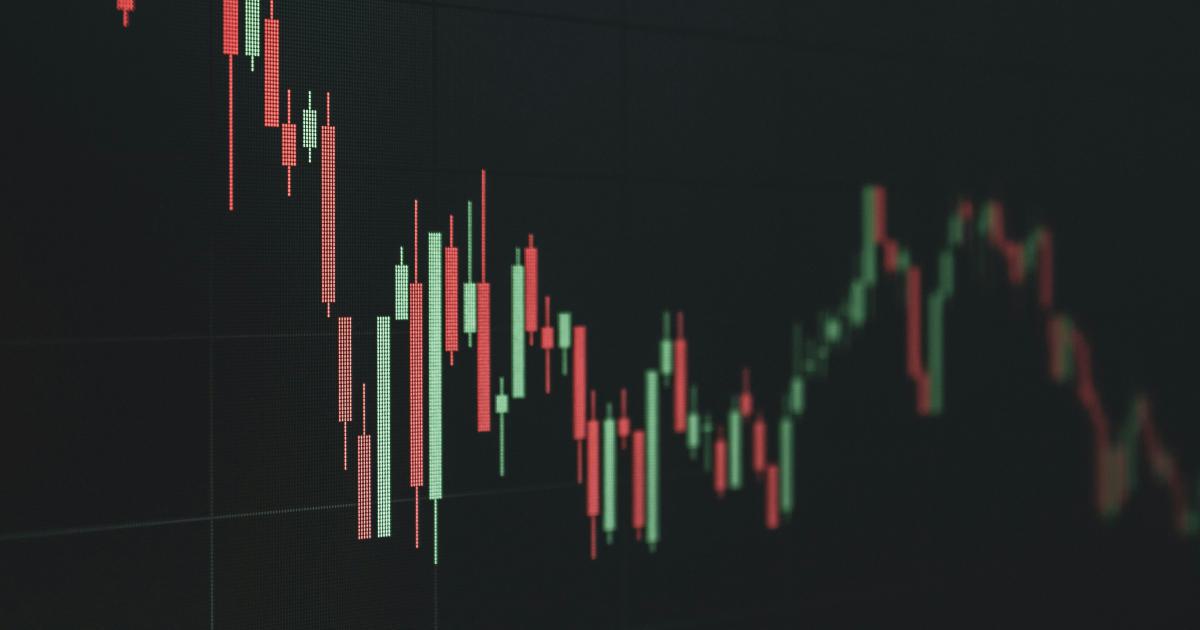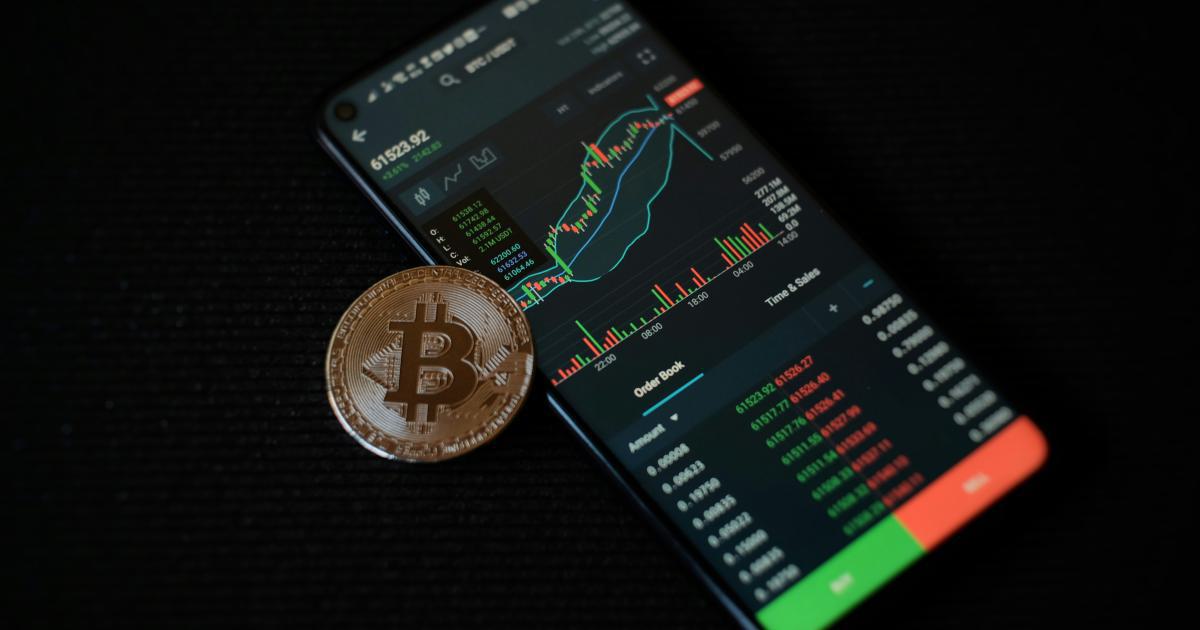How to Capitalize on Market Volatility for Profits

Market fluctuations can serve as a goldmine for those who know how to capitalize on market volatility. In this comprehensive guide, we will explore the strategies, methodologies, and psychological factors behind effectively profiting from these rapid changes. Whether you are an experienced trader or just starting out, understanding how to analyze, predict, and seize opportunities during volatile periods is essential for long-term success. We will dive into practical examples, step-by-step actionable tips, and best practices that help refine your decision-making process, ensuring you are well-equipped to navigate uncertain times and maximize gains.
Understanding Market Volatility
Market volatility refers to the degree of variation in the price of a financial instrument over time, measured by the frequency and magnitude of price changes. Volatility is inherently unpredictable, making it a double-edged sword: while it can lead to significant losses, it also opens doors for massive profit if approached correctly.
What is Volatility?
Volatility in financial markets is influenced by various factors such as economic data releases, geopolitical events, earnings announcements, and natural disasters. For investors and traders, volatility is a measure of risk; the greater the volatility, the higher the potential for profit, but also the greater the potential for loss.
Real-world examples include the rapid price swings seen during financial crises, technological disruptions, or significant regulatory changes. Understanding the context of these events aids investors in interpreting price movements and helps determine optimal entry and exit points.
Types of Volatility
There are two primary types of volatility: historical volatility and implied volatility.
- Historical Volatility: This type measures past price fluctuations and gives an idea of how much the asset’s price has deviated over a given period.
- Implied Volatility: Derived from option prices, it reflects the market's expectations of future volatility. This measure is particularly useful for traders who use options contracts to hedge or speculate on price movements.
Economic cycles, earnings reports, and unexpected events contribute to changes in both types. By closely monitoring these factors, market participants can adjust their trading strategies accordingly.
Factors Contributing to Volatility
Several external and internal factors contribute to market instability:
- Economic Indicators: Gross domestic product (GDP), unemployment rates, and consumer confidence indexes significantly impact market sentiment.
- Geopolitical Events: Wars, elections, or political instability can trigger rapid shifts in market dynamics.
- Market Sentiment: Collective investor psychology plays a huge role. When markets are filled with uncertainty or optimism, price swings become more pronounced.
- Technological Advancements: The advent of algorithmic trading has contributed to both increased liquidity and heightened volatility, often exacerbated by high-frequency trades that create flash crashes.
The Risks and Rewards
Profiting during periods of high volatility comes with inherent risks:
- Potential for High Returns: The dramatic changes can offer profitable opportunities if trades are accurately timed.
- High-Risk Environment: The same volatility that creates profits can also result in significant losses if not managed properly.
To navigate these risks, traders need to have a comprehensive knowledge of market forces, a robust risk management plan, and the discipline to adhere strictly to pre-determined strategies.
Strategies to Capitalize on Market Volatility
In this section, we will explore various strategies designed to capitalize on market volatility. These strategies include technical analysis, fundamental analysis, and alternative trading tactics. Each method is geared towards helping traders and investors harness the benefits of market fluctuations while mitigating risks.
Technical Analysis Techniques
Technical analysis is an essential tool in detecting entry and exit points during volatile periods. It involves studying historical price patterns and using statistical indicators to forecast future price movements.
Chart Patterns and Trends
Identifying reliable chart patterns such as head and shoulders, double tops, and trend lines can provide critical insights during turbulent market conditions. These visual cues help traders determine when prices may reverse or continue in a particular direction.
Moving Averages and Support/Resistance Levels
- Moving Averages: Utilizing different periods of moving averages (e.g., 50-day, 200-day) helps in smoothing out price data to identify trends and potential reversal points.
- Support and Resistance: Recognizing key levels where investors tend to buy or sell can signal when volatility might peak. Once these levels are breached, new trends can emerge, providing clear signals for trade entries or exits.
Technical Indicators
Indicators such as the Relative Strength Index (RSI), Bollinger Bands, and MACD are instrumental in evaluating market momentum. These help determine potential overbought or oversold conditions, which are common precursors to reversals.
Real-World Application
A prime example is the use of Bollinger Bands during 2008’s financial crisis. As prices hit the upper or lower bands, experienced traders executed trades knowing that extreme volatility was likely to correct itself.
Fundamental Analysis Approaches
While technical analysis focuses on price movements, fundamental analysis delves into the underlying economic factors that influence market volatility. This approach is particularly useful for long-term investors looking to understand why certain assets fluctuate.
Evaluating Economic Data
By analyzing economic indicators such as inflation, employment data, and manufacturing indices, investors can gain insights into broader market trends. For instance, an unexpected drop in employment rates may have a destabilizing effect on market sentiment, leading to sudden declines in asset prices.
Company-Specific Analysis
For equity investors, reviewing financial statements, earnings reports, and corporate strategies is crucial. Companies in sectors that are highly reactive to market conditions, like technology or energy, often experience dramatic swings during volatile periods.
Case Study: The Tech Boom
During the tech boom, volatility often correlated with innovation cycles. Companies that introduced breakthrough products saw significant stock price swings, reflecting investor sentiment driven by future growth prospects. In these scenarios, combining fundamental factors with technical signals provided more context, enabling better decision making.
Alternative Trading Strategies
Apart from traditional approaches, alternative strategies provide another layer to capitalize on market volatility.
Options Trading
Options allow traders to speculate on asset price movements by purchasing calls or puts. With the appropriate strategies like straddles and strangles, traders can gain profitability regardless of direction as long as volatility increases.
- Straddles: Involve buying both a call and a put option with the same strike price and expiration date, allowing profit in either upward or downward movement.
- Strangles: Similar to straddles but involve different strike prices, often lowering the cost while still benefiting from high volatility.
Swing Trading
Swing trading exploits short-term changes and momentum shifts. This technique involves holding positions for several days or weeks rather than minutes or hours. Successful swing traders rely on technical analysis to predict short-term price movements and adjust their positions quickly in reaction to market news.
Algorithmic Trading
Algorithmic trading automates these strategies through computer algorithms. These systems are programmed to react swiftly to volatility spikes, placing orders at speeds no human could achieve. Many institutional investors and hedge funds utilize this method, as it minimizes emotional bias and maximizes efficiency.

Risk Management in a Volatile Market
Risk management is a critical component when attempting to capitalize on market volatility. Several measures need to be in place to safeguard capital while still allowing room for exponential gains.
Setting Stop-Loss and Take-Profit Orders
Stop-loss orders automatically exit a position once a price reaches a predetermined level, limiting potential losses during sudden volatility spikes. Similarly, take-profit orders secure profits by closing down positions when the price hits the desired target.
Position Sizing and Diversification
Proper position sizing ensures that losses from any single trade do not disproportionately affect overall capital. Diversification across asset classes (stocks, currencies, commodities) also helps spread risk across different market segments.
Psychological Preparedness
Traders need to be mentally ready for quick market shifts. Emotional discipline is paramount. Techniques like meditation, regular breaks, and even seeking professional coaching can help traders maintain a calm, analytical mindset during turbulent times.
Utilizing Advanced Tools
Modern trading platforms offer real-time analytics and risk assessment tools. These tools are essential for keeping track of trends and making quick decisions in moments of heightened volatility. Employing these systems can put traders at an advantage, capitalizing on fleeting opportunities while managing downside risks.
Navigating Different Market Conditions
Market volatility does not occur uniformly across all sectors or during all economic cycles. In this section, we explore various market conditions and how to tailor strategies for each scenario effectively.
Bull Markets vs. Bear Markets
Market behavior in bull markets (when prices are rising) dramatically differs from that in bear markets (when prices are falling).
Volatility in Bull Markets
In a bull market, optimism is high and volatility tends to be driven by positive news and strong earnings reports. The challenge during such times is to identify when exuberance might be overextended, leading to corrections.
- Actionable Tip: Employ trailing stop orders to capture profits while allowing for upward swings.
- Example: During the recovery from economic downturns, many markets experienced a surge in prices followed by moderate pullbacks. Trading strategies that incorporated profit-taking at predefined milestones were particularly effective during these periods.
Volatility in Bear Markets
Bear markets are characterized by pessimism, making more frequent and pronounced volatility spikes likely. Downward trends can rapidly change course with hopeful news or effective government interventions.
- Actionable Tip: Use inverse ETFs or short positions to benefit from downward trends.
- Example: During the 2008 financial crisis, many astute investors used short selling and other hedging techniques to protect and even profit from falling prices.
Sector-Specific Volatility
Volatility is not uniform across all market sectors. Some industries are more sensitive to macroeconomic shifts than others. For instance, technology and biotech firms often see higher price movements due to innovation cycles and regulatory changes, compared to utilities, which tend to remain more stable.
Technology Sector
In the tech realm, innovation is constant and market expectations can shift dramatically with every new product launch or regulatory announcement.
- Actionable Tip: Keep a close watch on earnings reports and product release cycles. A well-timed short-term position can yield significant returns when volatility spikes during these announcements.
Energy and Commodity Markets
Energy markets, including oil and gas, are heavily influenced by geopolitical events and changes in global supply and demand. Even minor shifts in policy or news can lead to substantial price changes.
- Actionable Tip: Utilize fundamental analysis, coupled with specific geopolitical news tracking, to position trades effectively.
Global vs. Local Market Volatility
Apart from sector-specific variations, volatility also differs in global markets compared to local markets.
Global Market Dynamics
Global markets are interconnected, so a disturbance in one region can send ripples across continents. Currency fluctuations, international trade policies, and global events such as pandemics can suddenly elevate volatility levels worldwide.
- Actionable Tip: Consider international diversification. Hedging with currency options can mitigate risks when global markets move erratically.
Local Market Considerations
Local market volatility can be influenced by domestic politics, local economic reports, and localized events like regional natural disasters.
- Actionable Tip: Stay updated with local market news and consider short-term trades when local events are likely to induce volatility.
Leveraging Advanced Analytical Tools
In today’s digital era, a variety of advanced analytical tools are available to help traders strategically navigate market conditions. These tools blend historical data, AI, and machine learning to predict trends and model different trading scenarios.
Data Analytics and Big Data
The implementation of big data analytics in trading has revolutionized how market participants respond to volatility:
- Real-Time Data: Access to tick-by-tick data helps in making split-second decisions. This is crucial in volatile markets where delays can result in losses.
- Predictive Analytics: Advanced algorithms that evaluate historical trends and current market sentiment can provide predictive insights. Although not foolproof, these systems can guide traders on probable market turns.
Artificial Intelligence and Machine Learning
AI-powered trading systems can process multiple variables simultaneously and adjust strategies dynamically. These systems utilize neural networks to identify patterns that are not immediately obvious to human analysts.
- Example: Some high-frequency trading firms employ AI models that continuously update their strategies based on incoming market data streams, effectively capitalizing on fleeting opportunities presented by market volatility.
Software Platforms and Trading Bots
Several robust software platforms offer integrated environments where both manual and algorithmic trades can be executed seamlessly:
- Trading Bots: These computer programs follow preset rules and conditions to place trades automatically. Their ability to operate without human emotion makes them especially effective in volatile markets.
- Risk Management Tools: Many of these platforms include sophisticated risk management features such as real-time alerts, portfolio stress tests, and scenario analysis. These help in making informed decisions that account for both potential gains and downward risks.

The Role of Blockchain
Although primarily known for cryptocurrencies, blockchain technology is finding its application in traditional markets through its ability to provide transparency and security. Smart contracts built on blockchain can automatically execute trades based on pre-set conditions, ensuring faster responses during high-volatility periods.
Benefits of Blockchain in Trading
- Enhanced Security: Immutable records reduce the risk of fraudulent activities.
- Reduced Settlement Times: Faster execution of transactions minimizes delays that can be costly during volatile periods.
- Increased Transparency: All trades recorded on a public ledger allow for greater accountability and auditability.
Building a Robust Trading Plan
Successful trading during volatile market conditions requires a well-thought-out and tested plan. This section outlines the critical steps in constructing a trading strategy that not only maximizes profit but also minimizes risk.
Define Your Objectives
The foundation of any trading plan is a clear articulation of your financial goals:
- Short-Term vs. Long-Term Goals: Determine whether you are seeking immediate gains through day trading or building a diversified long-term portfolio.
- Risk Tolerance: Assess your comfort level with potential losses. This crucial step ensures that you choose strategies that suit your emotional and financial resilience.
Develop Entry and Exit Criteria
Your strategy should clearly outline when to enter or exit a trade:
- Technical Signals: Utilize indicators like moving averages, RSI, and support/resistance levels.
- Fundamental Triggers: Define specific economic or company-related events that warrant a trade.
- Pre-Set Thresholds: Establish stop-loss and take-profit points to automatically manage trade outcomes.
Backtesting Strategies
Before deploying capital in real markets, backtest your strategies using historical data. This process simulates how your approach would have fared in past volatile periods, providing insights into potential pitfalls and areas for improvement.
Tools for Backtesting
- Software Platforms: Many trading platforms offer built-in backtesting functionalities that allow you to simulate trades.
- Spreadsheets and Custom Algorithms: For more customized strategies, developing your backtesting models in spreadsheet software or coding platforms can yield more specific results.
Monitoring and Adjusting Your Plan
Markets are dynamic, meaning your trading plan should be equally adaptable:
- Regular Reviews: Set regular intervals to assess the performance of your trades and refine strategies.
- Learning from Mistakes: Maintain a trading journal to document what worked and what didn’t. This record will be invaluable for iterative improvements.
- Adjust for Market Changes: Remain vigilant about economic and geopolitical shifts that could necessitate adjustments to your plan.

Case Studies: Real-World Applications
To illustrate how these strategies can be successfully employed, let’s examine a few real-world case studies where traders capitalized on market volatility for profits.
Case Study 1: The 2015 Chinese Stock Market Crash
During the sudden downturn in the Chinese stock market in 2015, volatility ballooned dramatically. Many astute investors recognized that while most stocks were falling, there were opportunities to short sell overvalued companies with impending financial difficulties. The strategy involved a combination of technical analysis to pinpoint entry points and fundamental analysis to understand the underlying economic issues.
- Outcome: Those who implemented rigorous stop-loss orders and diversified their short positions managed to not only avoid catastrophic losses but also profit substantially from the market's rebound.
- Key Learnings: The importance of a robust risk management plan and the value of an agile response during massive downturns.
Case Study 2: Cryptocurrency Volatility in 2021
The cryptocurrency market is the poster child for high volatility. In 2021, Bitcoin and several altcoins experienced wild price swings influenced by factors such as regulatory news, investor sentiment, and macroeconomic trends. Skilled traders who capitalized on these movements employed strategies such as options trading and algorithmic trading bots.
- Outcome: By using technical indicators to time their moves and harness technology for quick execution, these traders managed to secure profits even as the market oscillated drastically.
- Key Learnings: Emphasizes the potential of advanced analytical tools and the need for continuous learning in adapting to rapidly evolving markets.
Expert Tips for Maintaining Profitability
Sustaining profits in volatile markets requires a blend of strategy, discipline, and continuous learning. Below are expert tips that can help traders and investors for long-term success:
Continuous Education and Adaptation
Markets evolve, and so should your trading strategies. Attending seminars, webinars, and reading the latest market research can provide you with new insights and techniques to stay ahead of the curve.
Networking with Peers
Joining trader communities and discussion forums can be immensely helpful. Sharing experiences and strategies can bring fresh perspectives and offer new ways to capitalize on market volatility.
Regular Evaluation and Adjustment
No strategy is perfect. Constantly analyze your performance data, re-assess your risk management, and be ready to pivot your approach if market conditions change. A disciplined approach to review and adjustment can significantly enhance long-term profitability.
Embrace Technology
Leverage cutting-edge technology, whether it’s the latest trading software or AI-driven market analysis tools. Automation and high-speed data processing can give you a competitive edge in capturing elusive opportunities.
Stay Informed on Global Events
Finally, never underestimate the impact of global events on financial markets. An informed trader can quickly adapt strategies in response to political shifts, economic reports, or unforeseen crises.
Future Trends in Market Volatility
Understanding future market trends can further empower traders in anticipating upcoming shifts and adapting strategies accordingly.
Increasing Role of Technology
Rapid technological advances, particularly in AI and machine learning, promise to continue reshaping the trading landscape. Future trading systems will become more predictive and responsive, further diminishing the role of human emotion in crisis situations.
Integration of ESG Factors
Environmental, Social, and Governance (ESG) investing is becoming more prevalent. As markets adjust to these criteria, volatility in sectors that are slow to adapt to ESG metrics might increase, creating opportunities for diverse investment strategies.
Broader Adoption of Cryptocurrencies
The continued acceptance of digital currencies may lead to sustained volatility in the crypto markets, but also create crossover opportunities between traditional investments and emerging blockchain-based assets.
Regulatory Changes
With increasing global coordination on financial regulations, markets might experience short-term volatility in response to policy shifts, but overall stability is expected to improve over the long-term. Investors must stay alert to these developments and refine their strategies accordingly.
Conclusion
Volatility in the market is not an enemy; it is an opportunity waiting to be seized by those who are adequately prepared and informed. By understanding both the quantitative and qualitative aspects of market fluctuations, refining risk management strategies, and leveraging advanced technologies, traders and investors can indeed capitalize on market volatility for profits.
Adopting a balanced approach that integrates technical analysis, fundamental insights, and disciplined risk management will empower you to navigate the tumultuous waters of financial markets. As global economic conditions continue to evolve, being adaptable and well-educated will remain at the forefront of successful trading strategies.
Armed with the actionable strategies discussed in this guide—including robust planning, meticulous backtesting, and the strategic use of technological tools—you will be positioned to exploit market volatility effectively. Remember, the key isn’t to avoid volatility but to capitalize on it, turning uncertainty into a profitable venture.
Market conditions will always be in flux, but with the right tools, continuous education, and a well-devised trading plan, you can transform market turbulence into a rewarding financial opportunity. Go forth, adapt, and let's capitalize on market volatility together in the ever-evolving world of finance.
Unmatched Trading Power with Binance
Are you ready to take your trading game to new heights? Binance offers a cutting-edge platform for seamless cryptocurrency transactions.
With lightning-fast execution, top-tier security, and a vast selection of coins, you'll have all the tools you need to maximize your profits. Join now and experience the future of trading.
Keval Desai
61 posts written





